As my move date approaches, I’m starting to feel the sadness of leaving all the wonderful people and places of Phoenix. Though I am excited about my new adventures, I’m mournful about leaving behind my wonderful life here. I might complain about Phoenix, but the truth is, this city has given me the chance to realize my dreams and become the person I’ve always wanted to be. It’s nurtured me and my work and has been a home to me and I am forever grateful for that.
Below are some of the things I consider best about Phoenix and that make it a unique place in the world.
10. Coffee Shops
Phoenix has great coffee shops! Not all cities, even the grand ones like New York and Chicago, have the kind of quality local coffee shops that we do in Central Phoenix. Because I work out of coffee shops, I’ve gotten to know the ones in town very well. In other cities, I’ve felt as if I needed to get my coffee, drink it and leave as soon as possible. But here, coffee shops are welcoming and don’t hurry you out the door. You can go to a local coffee shop and hang out for 30 minutes or 3 hours and no one will hassle you. Moreover, coffee shops in Phoenix are third places where chances are, you will run into friends, business associates and make new friends.
My favorite, as you may already know, is Lux Central, which I consider to be Phoenix’s living room. Giant Coffee is a smaller, quiter, nicely-daylit, place to work in the afternoon with high-quality coffee, tea and pastries. Then there’s Lola’s at The Goldspot, which is extra charming because it’s in an old building with a great window that faces one of the most walkable streets in Phoenix. Cartel in Phoenix, Tempe and Scottsdale is also a fantastic place to relax, work, chat and partake in good coffee and pastries. And my favorite far-flung coffee spot is The Coffee Shop in Agritopia in Gilbert, which serves as a nice getaway for me from time to time.
9. Murals
One of the first murals of the Calle 16 Mural Project on Thomas and 16th Street. Photo taken during Jane’s Walk 2011 by the author.
In all my travels, I have yet to see better murals than the ones we have in Phoenix. The Latino-influenced street art that people like Hugo Medina, El Moises and Gennaro Garcia have brought to Phoenix is nothing less than cutting-edge, world-class art. Huge kudos to Silvana Esparza Salcido for creating the Calle 16 Mural Project that empowered mural artists to make 16th Street between McDowell and Thomas into a Hispanic Cultural District with their provocative art.
Now the Roosevelt Arts District is carrying on the tradition with their own version of excellent murals that single-handedly transform back alleys, blank walls, and vacant lots into beautiful, inspiring spaces to look at and spend time. Phoenix’s murals are so unique and so powerful, they can compete, in my estimation, with the best of murals in cities like Mexico City and Berlin. The best part is that I think that this is just the beginning and Phoenix’s mural scene will continue to grow, becoming a part of its identity.
8. Contemporary Architecture
Architect Marlene Imirzian’s office in Sunnyslope. Photo courtesy of Marlene Imirzian.
Because of Phoenix’s Arizona School architectural heritage which began with Frank Lloyd Wright, we have excellent one-of-a-kind contemporary architecture in Phoenix. Here you will find a palette of materials that you will find no where else that includes rusted steel, rough cast-in-place concrete, sand-blasted concrete block, rammed-earth walls, gabion walls and canvas canopies. I’ll be posting an article about my favorite contemporary buildings in the Valley soon!
7. Midcentury Modern Architecture
The Arizona Bank by Ralph Haver, now The Vig Restaurant. Image from Modern Phoenix.
Because this city boomed after WWII, Phoenix has some of the best midcentury modern architecture in the country. We have fantastic commercial buildings, such as the wonderful banks commissioned by Walter Bimson, and also a great deal of world-class midcentury modern residential buildings, which are well-documented by Modern Phoenix. With the likes of Phoenix architects Ralph Haver and Al Beadle who created a unique desert variations of modernism, Phoenix has buildings of great value that you won’t find anywhere else in the world. Not only should we do our utmost to preserve these buildings, but we should use them to market Phoenix as a midcentury modern architecture destination, like a bigger, more robust version of Palm Springs.
Mayor Stanton recognizes the value of our midcentury modern architectural heritage and has spearheaded the creation of the Phoenix Postwar Architecture Task Force whose mission will be to preserve and protect the city’s midcentury modern architecture. I look forward to watching the work of this Task Force, which will be headed by Alison King, founder of Modern Phoenix, along with one other person who is still being selected.
6. Cost of living
3 Palms, a Blooming Rock redevelopment project, is a duplex that provides affordable rentals in Central Phoenix.
The cost of living in Phoenix is extremely affordable compared to other cities its size. Even with housing prices on the rise, you can still buy a great little house in Central Phoenix for under $250k. This fact should attract young talent and young families here like flies to honey. Phoenix’s low cost of living is a great asset for people who are looking to live a comfortable life without having to shell out a whole lot of money for it. This isn’t good news simply for people who don’t want to work too hard, it’s good news for creatives and innovators who want to experiment with unconventional careers that might not pay big at first. Phoenix could be a great laboratory for unconventional creatives and innovators due to its cost of living, but the only missing component is the type of urban lifestyle that those types of people want. The conundrum is that once that lifestyle will be available, the cost of living is sure to shoot up. In the interim, though, Phoenix has a great opportunity to shout from the rooftops about the low cost of living here to attract young innovators and creatives and also start cultivating the vibrancy they want so they’ll stay.
5. Latino heritage
Perrona’s Megastore on 16th Street between Thomas and McDowell in Central Phoenix.
Despite some Arizonan’s fear of the perceived ill effects of immigration on our society, Phoenix’s Latino heritage is one of the best things about the place. We have some of the best Mexican food you can find anywhere, with hole-in-the-wall places like Catalina’s, El Bravo and El Napolito that offer authentic tortas, tacos and tortillas that will blow your mind. I also love the Sonoran hot dog stands that dot Central Phoenix and create temporary people-places in parking lots that are open late into the night. Thanks to our Latino heritage, we have Dulcerias, Tortillerias and Carnecerias in our neighborhoods and buildings with a refreshing array of bright colors as opposed to standard Phoenix beige. Our Latino heritage brings interest, uniqueness, depth and diversity to Phoenix. It’s something we should cherish and cultivate and also use as something to attract young people to move here.
4. Hiking/Outdoor Recreation
The Grand Canal around 18th Street, south of Osborn in Central Phoenix.
This one I think everyone already gets – we have fantastic hiking and outdoor recreation in Phoenix, with breathtaking mountain parks just minutes drive from the city center. New York, Chicago and San Francisco can’t claim easy and quick access to beautiful desert hiking, so why not leverage this more as an asset in Phoenix? My friend John Johnson who recently moved here from Cleveland can’t say enough about the outdoor recreation opportunities in Phoenix which are greatly enhanced because you can use them almost year-round.
Besides awesome hiking venues, we have our wonderful canals, which hold great promise in becoming outdoor recreation corridors. Tempe has done a great job in tapping into the recreational value of their canals, with its enhancement of the Crosscut Canal and the Western Canal Path that connects Tempe and Gilbert. Phoenix as some nice stretches of canals including the recently beautified Arizona Canal in Sunnyslope, but a lot more work needs to be done to really fulfill the true recreational potential of our canals. I hope that the Canalscape project that was spearheaded by Nan Ellin, an ASU urban planning professor now at the University of Utah, which was handed over to Arizona Forward will not languish in endless committee meetings and will spring to life someday soon.
3. The winter
Biking through Central Avenue as part of the architectural bike tour in the spring of 2012.
I will miss our sunny and mild winters. It’s great for biking, hiking and in general is happy weather when much of the rest of the world is dealing with miserable weather. Phoenix’s winter weather, in which for simplicity’s sake I include fall and spring, is its greatest unchanging asset which has served as one of the biggest engines to the growth machine.
But beyond attracting tourists and snowbirds, I think Phoenix’s winter weather is an untapped asset to create a unique lifestyle for residents that you can’t find anywhere else in the world. Our weather begs our city to be bicycle-friendly, walkable and have well-used urban parks and public spaces. Most cities in the world that offer these amenities are plagued with rainy, snowy or extremely cold winters. We have such great weather here, Phoenix could be one of the best cities in the world for bicycles, pedestrians, parks and public spaces. But for some reason our day to day lifestyle consists of going from our homes, getting into our cars, and going to work. Currently, the infrastructure in Phoenix doesn’t lend to an outdoor urban lifestyle which would suit our gorgeous winter weather so, and this is a real missed opportunity.
2. Mayor Greg Stanton
At a recent Phoenix City Council meeting.
When I interviewed Greg Stanton when he was running for Mayor in 2011, I thought he was too good to be true. He was saying all the right things and he seemed to get it, but I wasn’t sure if he was just spouting campaign promises that would later be broken or if he was being sincere.
After being in office for about a year now, he’s proven that he’s the real thing. He follows through on this words, isn’t afraid to take a stand, and best of all, he listens. He is a great partner in City Hall for the grassroots activists working towards a more sustainable, more equitable future for Phoenix. Public input is a big priority for the Mayor as is evidenced by the valiant public process for the General Plan Update.
I also appreciate that the Mayor is deeply embedded in the community and isn’t just stuck in his office at 200 W. Washington. He shows up at a lot of community events. Most recently, I’ve seen him speak at the Downtown Devil Discussions, at Pedal Craft, at the Funk Lab for bike rack day, and at an opening for an affordable housing development in Downtown. He shows up and he talks with the community as one of its members, and this is how the Mayor breaks down barriers and gets things done.
I like that he isn’t a booster, though as a mayor, it’s almost his job to be one. Fortunately, he’s more of a realist, which makes him infinitely more effective. He isn’t afraid to look at the shortcomings of Phoenix, and has acknowledged that we need to do a better job attracting and retaining young talent publicly. He knows who and what he’s working with and tactically works with those things to improve the status quo. For example, he assigned a task force made up of community activists to work with high-rise developers to make sure their buildings will be pedestrian friendly and will have a positive impact on the surrounding area in Downtown, after the blank walls and generic street-level architecture of another city-subsidized project, Cityscape.
Just because he’s a realist isn’t to say he’s not visionary. The very fact that he has a sustainability committee working to advise him is commendable and forward-thinking. I’d like to see the committee being more effective but am pleased with the new urban garden project on the southeast corner of Indian School and Central that it spearheaded. Mayor Stanton has also been visionary when it comes to historic preservation. He took a leading role in helping to preserve the David Wright House and is now looking to revise Phoenix’s outdated and impotent historic preservation ordinance.
Though we have a weak mayor system, I am excited to see how the Mayor partners with grassroots activists to make some real lasting change for the better in Phoenix. I so appreciate Mayor Stanton’s rare ability for seeing value in things that normally get ignored in Phoenix – sustainability, historic preservation, and everyday people who don’t necessarily wield power with their checkbooks but who care about and are invested in Phoenix. Mayor Stanton gives me great hope for Phoenix.
1. Grassroots activists
I have had the privilege to serve with a group of smart, creative and dedicated grassroots activists advocating for historic preservation, bike infrastructure, walkability, better parks and fewer parking lots among other important aspects of making Phoenix a better city for everyone. Phoenix’s grassroots activists are its greatest hope to change direction from a sprawling giant that’s “a 300-pound boxer that can barely punch at bantam level” according to Jon Talton, to a vibrant, happening, people-centered city that folks of all ages are clamoring to move to.
Without the persistent voice of grassroots activists, it would be business as usual in City Hall – catering primarily to automobiles, the fringes, and developer’s interests instead of quality of life issues. Most recently activists have seen two major victories – Circle K pulling out of their planned Roosevelt and 7th Street 16-pump gas station and the saving of the David Wright house. This is only the beginning for the increasingly powerful cadre of activists and advocates that are beginning to shape a sustainable city against all odds from the bottom up.
Phoenix’s grassroots activists are its heart and soul. The rest is just business. It’s important that this very important group continue its efforts, grows, learns from the past, puts in succession plans and stays in it for the long haul (this coming from someone who’s leaving, I know). Right now, every time an activist moves away from Phoenix, it feels like a punch in the gut because every single fighter for Phoenix is so important to the cause of making this a more livable city. But the day isn’t far when this group of dedicated activists is a strong and resilient force and can withstand people moving in and out of it’s fold.
Photo Credit: All photos by the author except as noted otherwise in the caption.















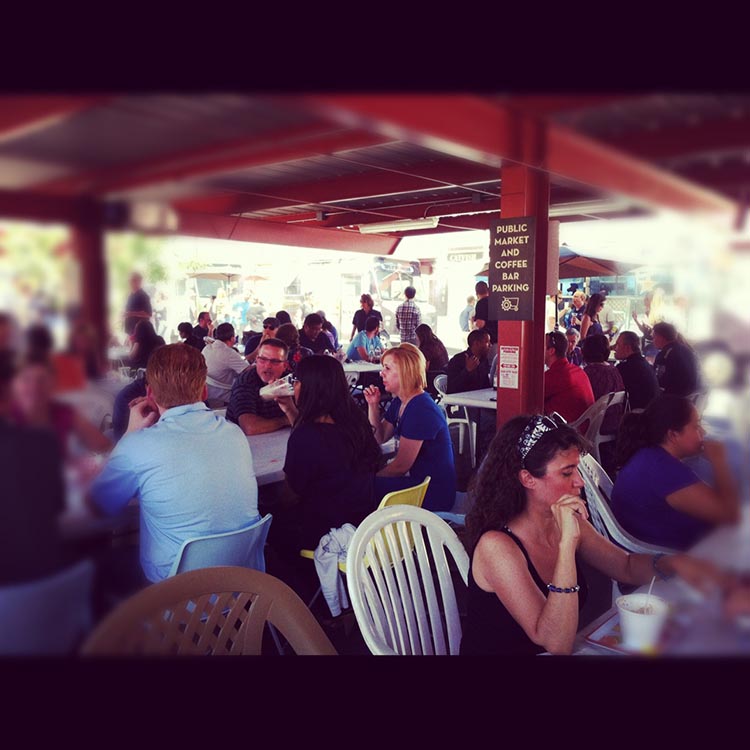
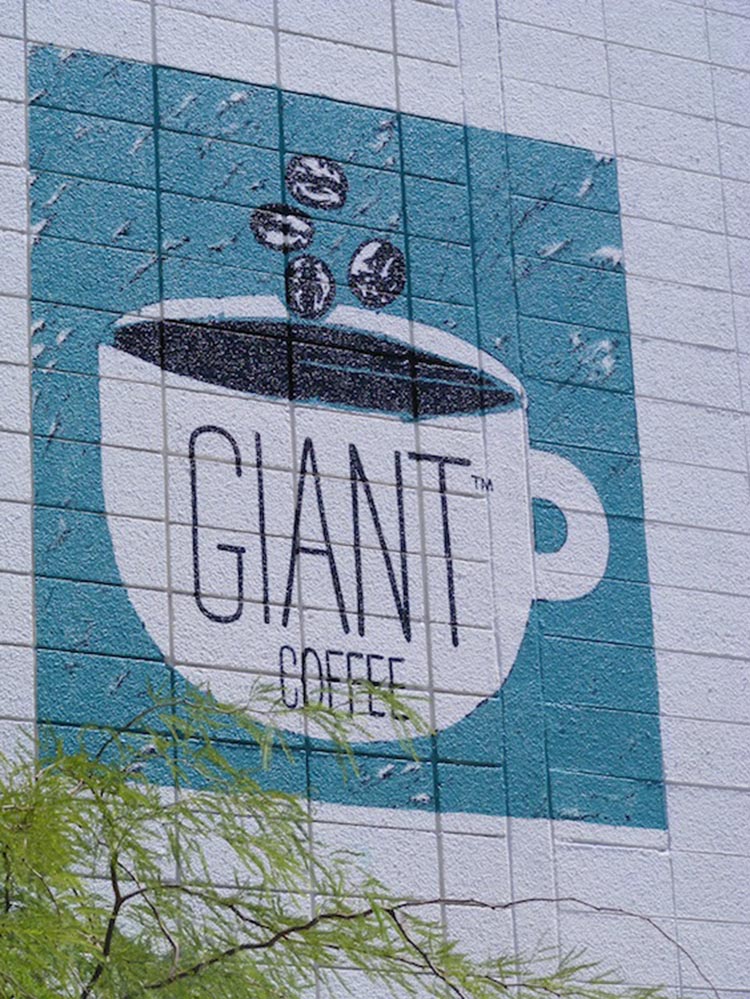
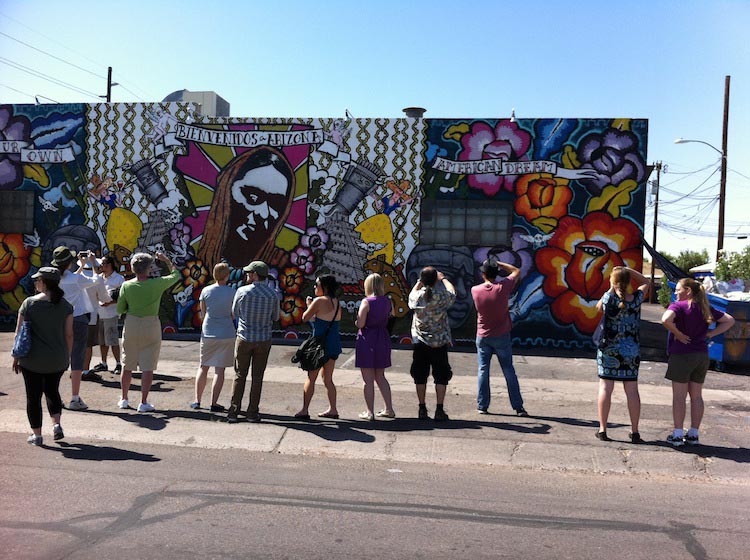
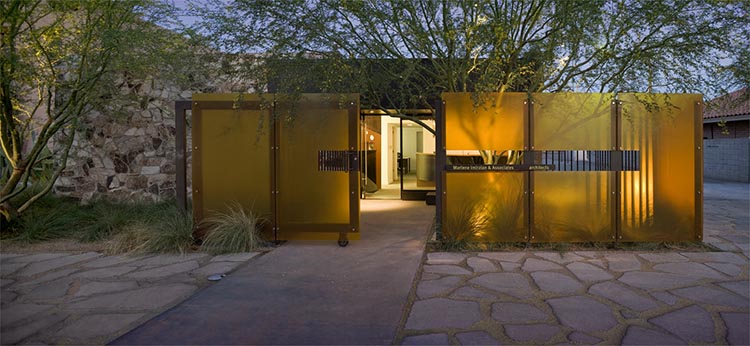
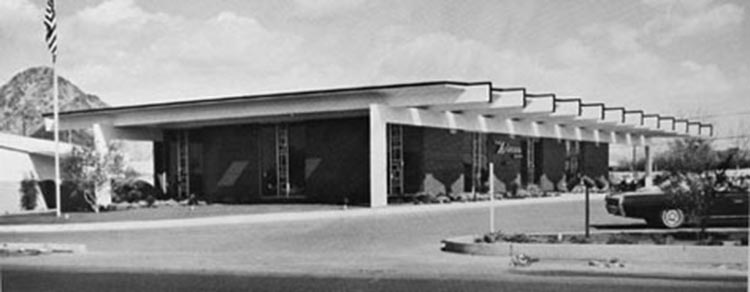
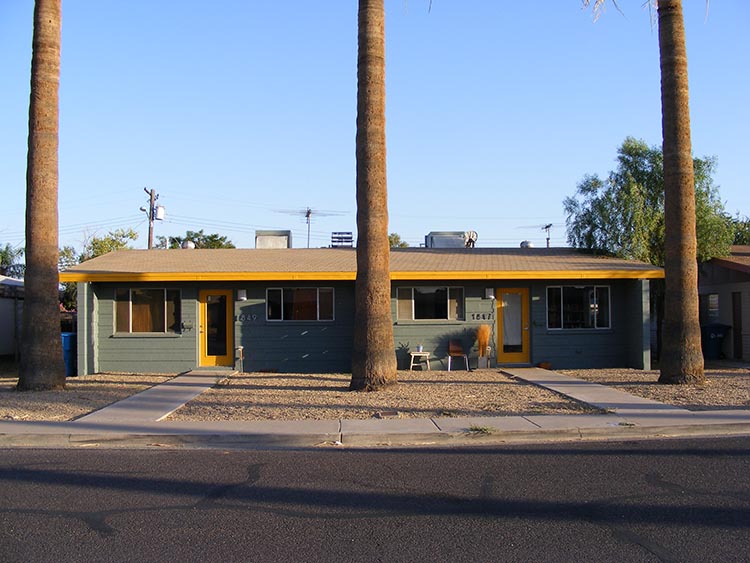
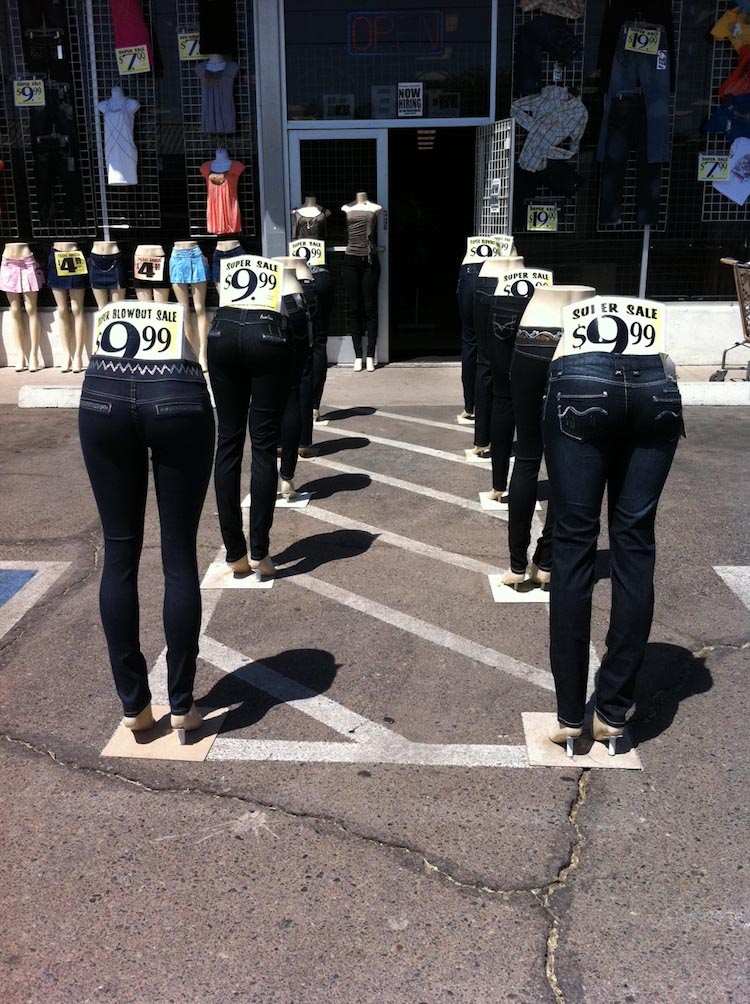








I definitely agree that we have some of the best murals & muralists in the country.
I do have to mention, with much respect to the artists you’ve mentioned, that Lalo Cota has become quite the master muralist. He’s been working in Phoenix for years but I really think that his murals both sharpened his voice & have become great parts of downtown & central Phoenix. His attention to detail and ability to make his murals work on different levels make them some of the best in the country.
Just wanted to make sure that Lalo (http://lalocota.com) gets his props!
Thanks for the addition Jose…absolutely agree about Lalo.
We’ll miss you at Lux, Taz!
I live in Seattle, but when I visit Phoenix I bring back whole bean coffee with me, because the coffee in Phoenix is among the best anywhere! Lux and Copper Star are excellent coffee shops!
[…] look at Phoenix, though, and you’ll fall in love with its long, wide streets of single-story, midcentury modern homes and buildings. The throwback continues with an overload of artisan coffee houses and […]